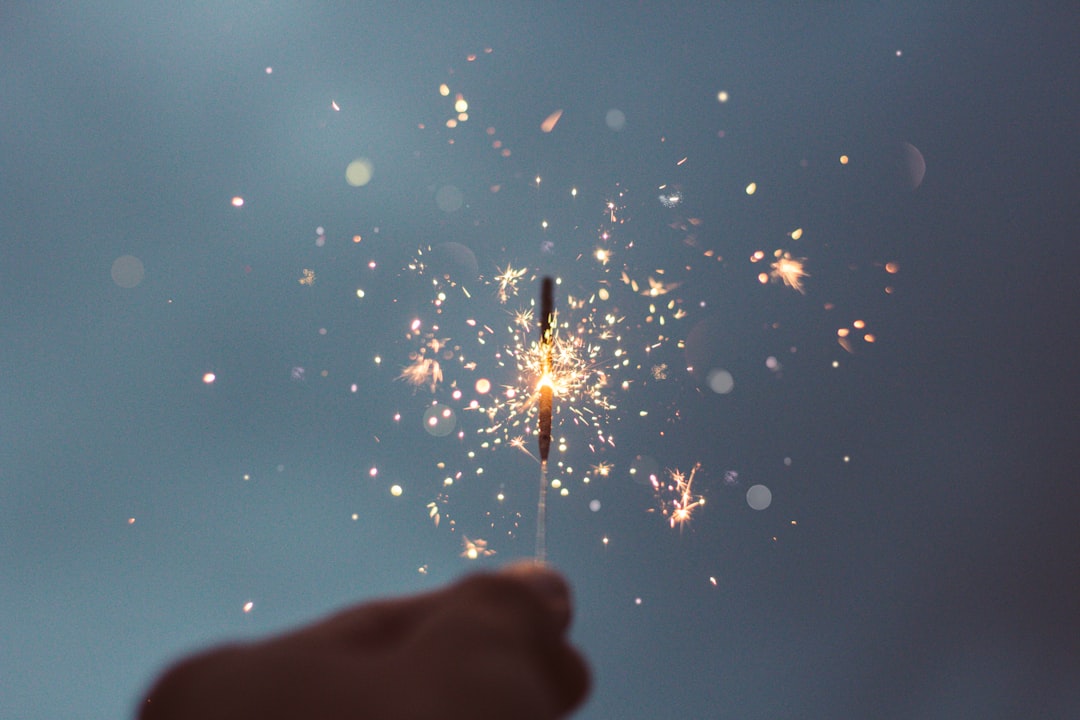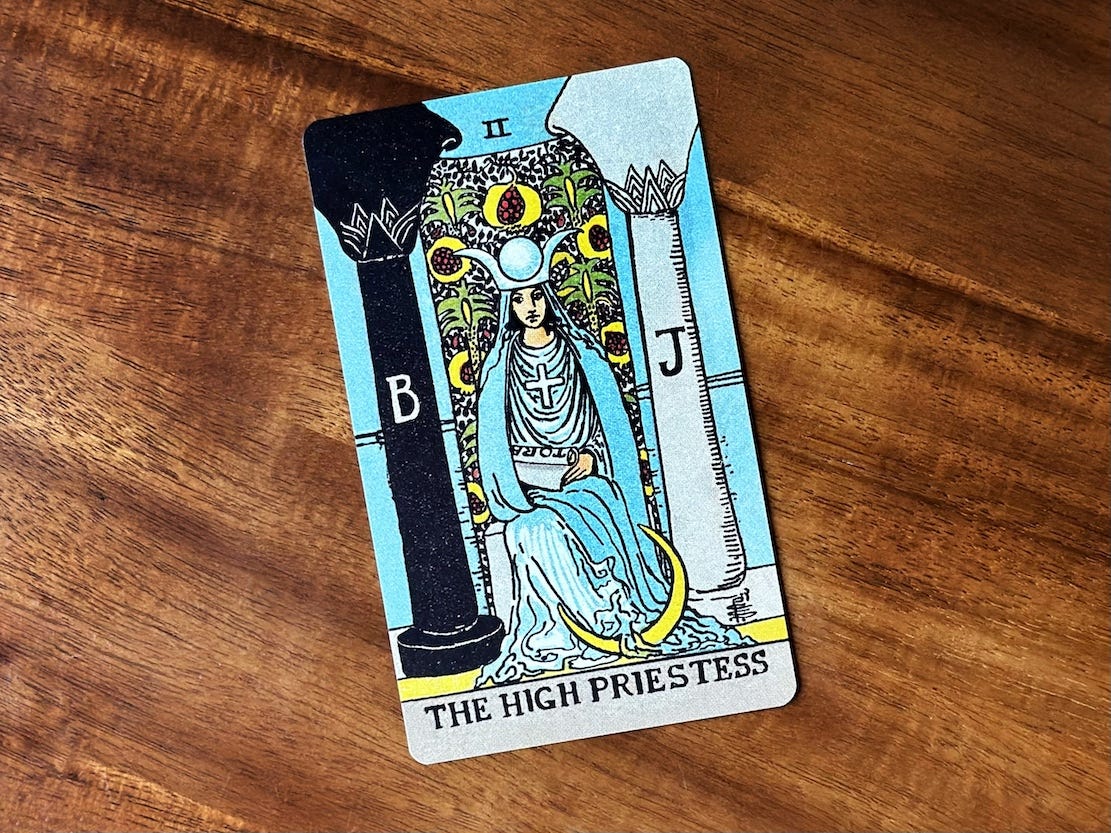I recently picked up this novel that everyone — friends, critics, reader reviews — loved. (Before we go any further, I’m not going to say what it is, because my feelings are subjective, and I don’t want to speak ill of someone’s work.)
The writing was impressive, but distractingly so, like the author was trying to juggle fire and keep five plates spinning. It was the fiction equivalent of a work presentation featuring slide after complicated slide, where everyone speaks in acronyms and corporate jargon. The participants nod along, too afraid to ask a question or point out that none of it makes sense.
Anyway, I gave it my best, but I couldn’t get into it. I was in the mood for connection, for immersion into another world, and it felt like the author was keeping me at arm’s length.
That’s when I realized: I was dealing with a wizard.
I have a long-held theory that when it comes to art and writing, but also much of life, there are two approaches one can take: the wizard and the friend.
The wizard is dazzling, an expert at smoke and mirrors. They make complicated things look easy. They inspire awe. Their social media feeds are carefully curated and expertly lit, with nary a hair or prop out of place. They exude talent, vision, certainty. (Or make you think they do.) You may admire them but would be intimidated to approach them at a party.
Like the Wizard of Oz, voice booming behind a curtain as flames dance before it, the wizard’s power is often maintained by relative secrecy. They will guard the family recipe, demure when asked for tips. They do not confirm rumors. They will never reveal their tricks (nor the many professionals who help keep them together). They woke up like this, or so they’d have you believe. Even wizards who never “make it” are iconic.
Meanwhile, the friend lets you into the fold. They invite you backstage, like an enthusiastic tour guide of their secrets. As a manager or mentor, they’re the nurturing type, sharing their own struggles and experiences. They speak plainly and openly. Their prose feels like a conversation in which the reader is invited to participate.
The friend finds power in loyalty and connection, in camaraderie and earning one’s trust. Their social media feeds are full of confessional content, and they happily discuss everything from breakups to home and career struggles to their decision to try medication. (Sometimes, you might worry they’ve been spying on you, because they’ve managed to encapsulate your experience so fully.) If you saw the friend at a party, you wouldn’t hesitate to approach them.
Examples are everywhere, across genres and industries, not to mention in our classes, conference rooms, and homes.
Martha Stewart is decidedly wizardly (particularly in the early part of her career). JLo, Rihanna, and Taylor Swift? Wizards. David Copperfield — magician, but also wizard. There is wizardry in the works and legacies of Joan Didion and Steve Jobs.
Kristen Bell has big friend energy. So do Glennon Doyle, Phoebe Robinson, and Keanu Reeves. When Mr. Rogers looked into the camera and talked directly to whomever was on the other side of it? A perfect example of the friend.
Occasionally, there is crossover. I’d say Oprah is a friendly wizard; Alexi Pappas is a wizardly friend.
To be clear, this is less about the individual — I don’t know these people! They’re probably very different in real life! — and more about communication styles, approaches, the PR spin. We are complicated creatures who defy categorization.
In our own lives, we may seamlessly dance between wizard and friend, in different ways, in different contexts. Ultimately, these aren’t labels to affix or roles to inhabit. They are archetypes with something to teach us.
I’m speaking as an American, but our culture loves a wizard. (And I don’t mean Harry Potter.) We put them on magazine covers, give them awards, elect them to public office. We watch their performances and buy the products they endorse.
Wizards inspire. They push our limits. They dare us to (re)imagine what is possible. Watching a wizard give a TED talk or launch a new company or headline a tour can fill us with wonder, belief, enthusiasm. We can channel them when we want to “fake it ‘til we make it.”
It can seem like wizards run the world. And in many cases, they do. But the more I live, the more I’ve become partial to the friend.
I sometimes struggle with social anxiety, particularly in crowded places full of people I don’t know. But I once heard a tip: instead of thinking of a room as being full of strangers, think of it as being full of potential friends. That small shift helped me tremendously.
Following this logic, a wizard is actually a friend…behind the curtain.
Ask any wizard (or don’t, because they probably won’t admit it) but no one is born at the top of their game, already well-versed in magic. Knowledge must be learned, skills must be practiced, success generally follows hard work and time. We may not see these things, outwardly. A wizard may not share them. But if you dig deep enough, there is always an origin story. Always a common thread.
When I was younger, I aspired to wizardry. It wasn’t some calculated thing — I don’t think I even realized it was happening — but it informed the way I moved through the world. I wanted to be charismatic, ebullient, a touch enigmatic, like some character from a movie that bore no resemblance to my life.
I tried. Really, I tried. I did what my glossy magazines told me to. I bought products and used them religiously. I wrote sentences with big words and deep metaphors and Yoda syntax. But no matter what I did, when I looked in the mirror, what greeted me was always…a person.
Eventually, she became my friend.
These days, I’ve accepted that I may never reach wizardhood. I’ve also realized that in many ways, this is for the best. Because whether we spend our days packing an arena or a lunchbox, writing a pretentious novel or a friendly email, inventing a groundbreaking device or using an existing one, certain truths pervade our world:
All people are magical. And everyone can use a friend.
BRCP is a fully reader-supported publication. Currently, 96% of regular readers access it for free. (THANK YOU, paid subscribers.) If you enjoy it, please consider upgrading your subscription.
1) You’ll get another email every Wednesday — with warm, wise, relatable interviews and solid recommendations.
2) You’ll help make my work sustainable, which is deeply appreciated.
(As always, if a paid subscription is not currently within your means, send me an email and I’ll extend you a comp, no questions asked. ❤️)
Card of the Week
Here is this week’s card for the collective, as well as some thoughts to carry into the days ahead. As most modern readers will tell you, the tarot is not about fortunetelling, nor is it about neat, definitive answers. The cards are simply one path to reflection, a way of better knowing ourselves and others through universal themes. If this reading resonates with you, great! And if not, no worries. Take whatever may be helpful and leave the rest.

Perhaps more than any other card, The High Priestess is overflowing with symbols. There is the scroll on her lap, the crescent moon at her feet. The curtain behind her, printed with pomegranates. The pillars, light and dark, she sits between… There is much to be said about them, but I won’t try to sum it up here. Instead, I’ll share the message I’m getting right now:
The most profound truths are often the simplest. The simple things in life — what we often take for granted — are often the most profound.
I love how The Pasta Tarot has reimagined The High Priestess as a chef equipped with a recipe, manning a cauldron between salt and pepper. It’s the perfect interpretation of how a basic human need — nourishment — has the ability to become a creative act. And how we, as the creators of our meals and our realities, have multiple ways to go about it. We may rely on the recipe, we may lean into our intuition, or some combination of them both.
The High Priestess reminds us that the most “common” everyday ingredients can produce something extraordinary. Often, they are all we need.
We needn’t search far and wide for Truth, Wisdom, or Mystery when there is plenty of it sprinkled throughout the everyday. This very moment contains them all.
The High Priestess loves to pose questions, especially the kind that make her sound high (she’s not). How amazing is it that a bumblebee flies and a hummingbird hovers in place? She points out the intricacy of a flower, the beautiful absurdity of being inside a human form. Everywhere she looks, she sees grace and beauty and humor. And she wants you to see it, too.
The energy of this card dwells in the space between mystery and intuition, conscious and unconscious, known and unknowable. Where others are in motion — trying, spinning, speaking — the priestess is content to remain still. She is always aware of the sphere she inhabits — both the external plane and the world within.
Whether we’re talking linguini or life, the High Priestess encourages us to call upon our intuition. Instinct is a valid form of guidance, about everything from those big choices — where to live, what to do — to the everyday acts of caring for and nourishing oneself.
In our modern lives, we worship movement. We spend ours days rushing about, trying to do and make and fix. We like to follow instructions, directions, prescriptions — and when we do, we expect to see tangible, measurable results. The High Priestess understands that 1) a map is not always available, and 2) not every situation requires action.
This card reminds us that intuition is not a superpower so much as a trait to be cultivated, a sense often lying dormant within us. Far from supernatural, it is simply the act of sharpening your ability to observe and feel, in tandem, until you become aware of the knowledge already within you.
Western culture celebrates the mind. It loves answers. Recipes. Plans. Directions. But this card teaches us that there are many types of knowing. We may dismiss hunches, feelings, kernels of dreams. But they contain our truth. It is only by listening that we may hear it.
The character on this card is often regarded as a guardian of mysteries, which makes her sound like some sort of gatekeeper, lording over some esoteric knowledge not accessible to us all. But in fact, the opposite is true. A Priestess is someone who initiates. A person who invites others in, helping them explore the world around them. A person who helps them access and understand their own inner realms.
In the days ahead, remember the urging of The High Priestess: Listen for your own inner guidance. Follow that creative pull. Let curiosity lead the way. Don’t be afraid to improvise and see what you discover. Be open to people who initiate — a conversation, a friendship, an idea… Perhaps you’ll feel inspired to do the same.














You manage to be both a Wizard and a Friend, which is the truest secret sauce of all.
This is a wonderful observation. Seems to me that in a world that really admires and elevates wizards, we should strive to be more like the friend.